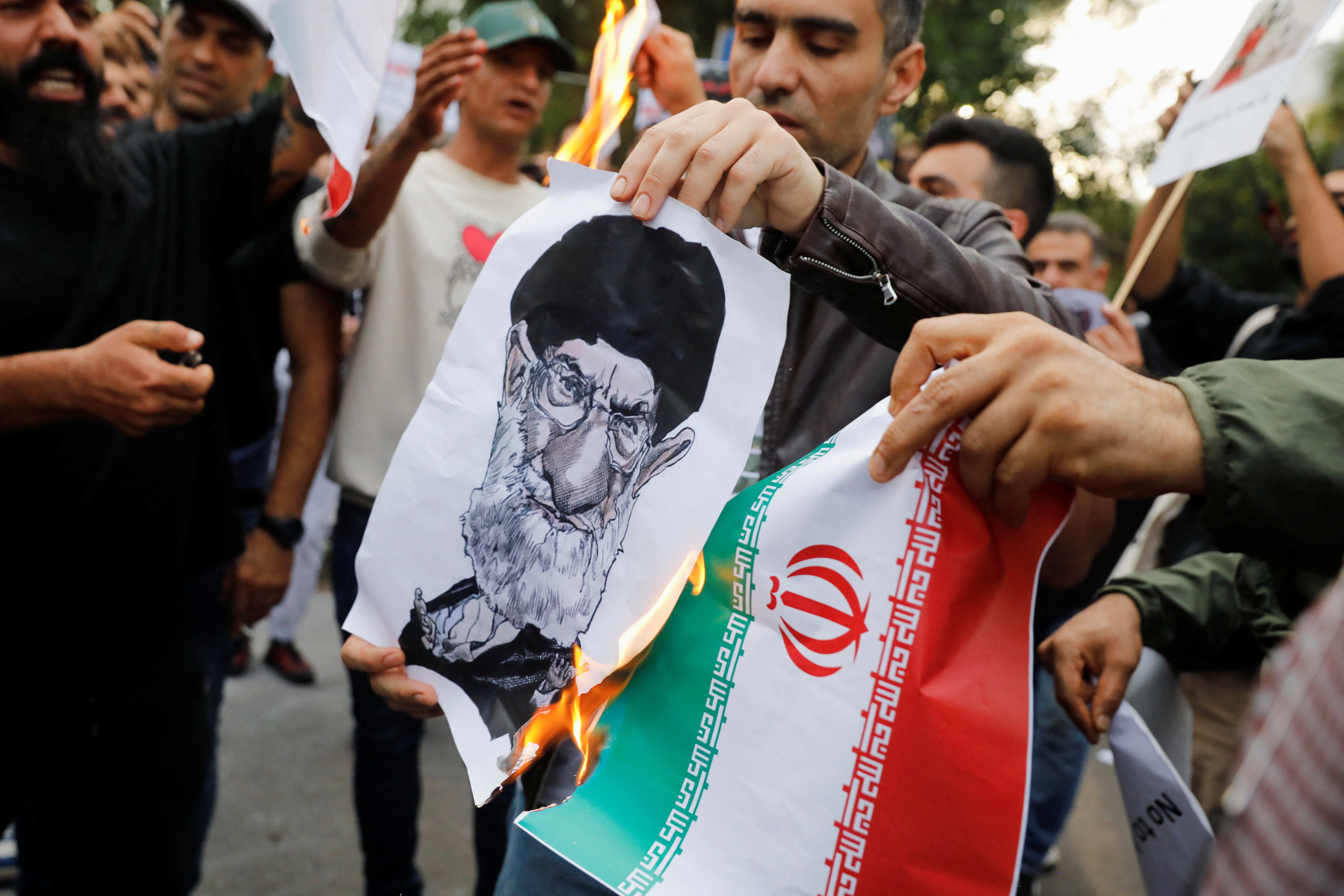Iran’s leaders believe their own lies – and it’s dangerous
This time around, the country’s own children are rising up, but the regime’s authorities cannot comprehend what this means, writes Borzou Daragahi


It is a formidable homegrown protest movement led by women and even young teenage girls defiantly ripping off their headscarves and ripping up icons of the Islamic Republic. They are joined by young men, mothers, fathers and labourers in what appears to be a wave of popular protest.
But much to the peril of the country, Iran’s top officials are downplaying it, even dismissing it, and refusing to bend or offer any concessions. They do not actually believe the protesters have any legitimate grievances. That is dangerous, but in keeping with the ideology of the cult-like clique at the helm in Tehran.
The protests have raged now for a month since the 16 September death of Mahsa Amini, who fell into a coma after she was abducted by the country’s morality police. In weeks of unrest, there have been at least 428 protests, reaching at least 112 Iranian towns and cities and leading to at least 233 deaths, according to Hrana, a network of Iranian human rights activists. The situation may only get worse.
Protests erupted on Saturday in numerous corners of the country, plunging cities into fiery clashes. Officials are dreading 25 October, the religiously potent 40th day since Amini’s death, when the soul moves on from earth to the afterlife in the Muslim and Eastern Orthodox Christian faiths.
The protests have soured any talks of restoring Iran’s nuclear deal, starving the regime of billions in potential frozen assets and new business deals. Images of baton-wielding goons brutalising young women half their sizes have further sullied the already tarnished image of the Tehran regime.
But to hear the top officials of the Iranian leadership tell it, the protests are no more than an annoyance, even if 26 members of the regime’s own security apparatuses have been killed, and even if a massive deadly fire at the country’s most famous prison shocks the nation and grabs global headlines.
President Ebrahim Raisi likened the protesters to “flies’’ during a speech at the capital’s all-women Al-Zahra University. And supreme leader Ali Khamenei dismissed the protests as a foreign plot that will come to nought.
“These riots were planned,” he said in a 12 October speech. “If the incident with the young girl had not taken place, they would have found another excuse to create insecurity and riots in the country. Who designed these plans?
“I openly state that these schemes were designed by the US, the usurping, fake, Zionist regime, and their mercenaries. They sat down and planned. They devised these schemes. Their employees, mercenaries, wage earners, and some treasonous Iranians abroad helped them.”
There is a reason why Khamenei talks with such bluster. He truly believes it. He is ensconced in a cocoon of the regime’s ideology that would be very hard for him to break out of. He is utterly convinced of the righteousness of the Islamic Republic and its aims and achievements. Those who complain or protest are the problem, and must be corrected or purged.
Think Stalin during the famines of the 1930s, when he concluded that those starving to death in Ukraine because of his agricultural bad policies were “counter-revolutionaries” trying to give the Soviet Union a bad name.
“This is typical of totalitarian leaders,” says Mehdi Khalaji, a scholar who is writing a book about Khamenei and is a senior fellow at the Washington Institute for Near East Policy. “He thinks what he says. He doesn’t lie. He really believes his own words.”
For weeks, protesters have been regularly trashing Khamenei’s portraits and calling for his ousting and death at ongoing rallies. “Death to Khamenei!” has been scrawled on walls throughout the country. In contrast to previous protests, there are no demands for this or that official to resign, or for prices to go down or wages to go up. Instead, the protesters are calling for the end to the Islamic system.
But Khalaji, himself a former theology student in the same seminary system that produced Khamenei and other Iranian clergy, says that the regime doesn’t really care. Khamenei dismisses such people as a misguided few, or dupes directly or indirectly controlled by foreign intelligence services.
“Khamenei recognises there are some people who are not happy,” he says. “But he believes that most of them are wrong in blaming the Islamic Republic for their problems. He really believes it’s all a foreign conspiracy. He doesn’t lie when he says he believes that George Soros or someone like him is behind this crisis.”
Khamenei may not fully understand the dynamics behind the protests. For years, he has spoken of Iran as a society divided by ethnic and socioeconomic cleavages. But he never speaks about generational splits. The protesters leading the way in the current uprising are rich and poor, Persian, Azeri, Kurdish and Baluch – but they are overwhelmingly young. This time around, the country’s own children are rising up.
The authorities may not comprehend what this means: there is a seismic shift in political and social views that may be fundamentally incompatible with the Islamic Republic.
To keep up to speed with all the latest opinions and comment, sign up to our free weekly Voices Dispatches newsletter by clicking here
The regime’s underestimation of the protest movement likely works to the advantage of the regime’s opponents, giving them openings to continuously outmanoeuvre and surprise the authorities.
But such a fundamental misunderstanding is dangerous. If the regime sticks to the idea that the protests are yet another foreign conspiracy against its holy and righteous aims, it will continue to use the most extreme and violent security measures, such as forcing children into re-education camps.
“They are detached from reality and they are detached from common sense,” says Khalaj. “There’s no experience that can be taken as evidence against their theory or ideology. Their idea is sacred and whatever facts are against it don’t matter. They don’t think it’s a problem with the ideology. They are trying to adapt reality to the theory rather than the theory to reality.”
In his 12 October speech, Khamenei acknowledged that some voices within the elite had argued against using only security forces and prisons to address the protest movement, but that he disagreed. Iran’s regime is doubling down on a strategy of using the security forces to address a plethora of public grievances that only begin with the mandatory headscarf, and include corruption, mismanagement and a lack of political freedom.
This strategy will put the country and the region in danger and imperil countless lives, leading to more and more death and misery, and possibly even spark a broader civil war.






Join our commenting forum
Join thought-provoking conversations, follow other Independent readers and see their replies
Comments